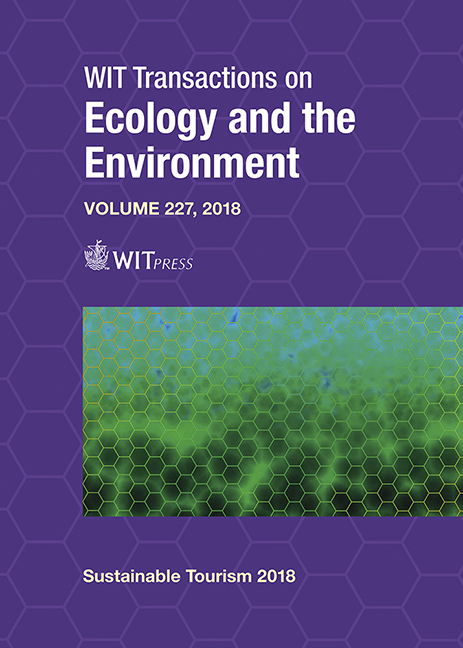USING PILE SORTS TO UNDERSTAND PERCEPTIONS OF CLIMATE CHANGE
Price
Free (open access)
Transaction
Volume
227
Pages
9
Page Range
175 - 183
Published
2018
Paper DOI
10.2495/ST180171
Copyright
WIT Press
Author(s)
LYDIA R. HORNE, SANDRA DE URIOSTE-STONE, JOHN DAIGLE, CAROLINE NOBLET
Abstract
More research is needed to understand how the detection and attribution of climate change impacts and shapes stakeholder mitigation and adaptation behaviors in the tourism industry. Pile sorting has been a widely used method in anthropology and psychology, but few studies have used pile sorting to understand how people think about climate change risks. The goal of this study is to address these gaps in the literature by using pile sorting to understand group cognition of nature-based tourism stakeholders about climate change and how these perceptions influence mitigation and adaptation behaviors. We conducted the study in Western Maine, an area highly vulnerable to climate change due to the region’s reliance on winter nature-based tourism. Participants were selected using chain referral. Pile sorts were embedded in nineteen semi-structured interviews. Participants were given 34 cards listing environmental and social conditions and asked to sort them using their own criteria for organization of piles. We used multidimensional scaling analysis in SPSS 24 to analyze the pile sorts and generate a spatial map depicting how terms were related. Transcripts were thematically coded to further understand pile names. Two dimensions emerged from the data: perceived control and drivers and impacts. Perceived control was low and terms in these piles were often acknowledged to be caused and influenced by humans, but participants felt that these issues were out of their control to mitigate or manage. Participants distinguished between drivers of climate change and resulting impacts to both the tourism and overall socio-ecological system. Understanding how nature-based tourism stakeholders in the study region understand climate change will help inform our interpretation of risk perceptions and behavioral responses to climate change. This knowledge will help tailor climate change communications to be more effective in building awareness, empowering stakeholders to mitigate and adapt in the face of climate change.
Keywords
risk perceptions, cultural domain analysis, nature-based tourism, winter tourism, multidimensional scaling analysis, adaptation





